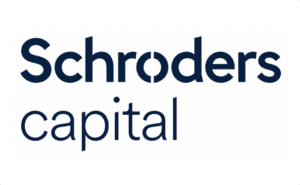How to message the hard market going forward

Profitable insurance companies mean stable and reliable protection for insureds during a time of uncertainty, and the property and casualty insurance industry in Canada should not be shy about reinforcing this message, industry execs told the NICC Conference in Halifax earlier this week.
“I think about Lloyd’s journey to a place where we can offer sustained underwriting appetite and address some of the big risks,” Marc Lipman, president of Lloyd’s Canada, said at an insurance panel Monday. “I think you can only do that from a position of…financial stability, if not strength.
“You’ve got to have the resources in your house if you want to tackle some of the biggest issues and support customers through that. So, I don’t think I don’t think we have to, as an industry, apologize for success.”
Lipman was alluding to the fact that Lloyd’s global marketplace reported a profitable combined ratio of 91.4% in the first half of 2022, as opposed to an unprofitable ratio of 104.5% in 2018, which triggered Lloyd’s to “remediate” some of its unprofitable books of business.
“I think if we talk to our customers intelligently, and explain why a sustainable insurance industry provides long-term predictability in terms of coverage and protection, there is a compelling argument to be made there,” Lipman said. “But like all messages, it needs to be delivered in the right tone, and not in a way that is tone deaf.”
NICC’s 2022 delegates heard about several risks facing the industry moving forward — geopolitical risk, inflation, disrupted supply chains, global recession, climate change, etc. — but reputational risk loomed large during several of the panel discussions.
NICC 2022 emcee Alister Campbell, president and CEO of the Property and Casualty Compensation Corporation (PACICC), framed the risk clearly in his introduction to a panel of insurers Monday.
“There’s some affliction in society that the pandemic has partly caused, but maybe just exposed, that’s raised doubts about institutions,” Campbell observed. “And our industry sells a promise that is fundamentally grounded in trust. And if people start to doubt institutions, we are on the list of folks who could be doubted.
“I think this idea of doubling down on what we do well, this promise, makes total sense. But in that context, how do we feel about being an industry that has just produced maybe the two best back-to-back years in our entire history — and we’re going to raise rates again? How is that going to work in terms of trust in society?”
In 2021, the industry’s earned premiums grew 8.4% and claims dropped by 10.7%, yielding more than $10.6 billion in underwriting income, according to MSA Research. The industry’s combined ratio last year was 83.7%, while return on equity (at 17.2%), surpassed 12% for only the second time in 16 years.
But this has been done on the backs of the insureds over the course of a two-year-long pandemic, in which several commercial insureds have suffered financially. The result has meant trying times for consumer-facing brokers, as panellist Paul Croft, chief operating officer of Aon Canada, observed at a commercial insurance panel.
“One thing we’ve underestimated is the impact of the hard market over the last couple of years on our industry and on our clients,” Kroft said Monday. “We’ve taken a lot of hits on this. I can relate a comment on this. I remember back in 2020 having a call with a client who had phoned. They were paying half a million dollars in insurance and all of a sudden their insurance bill was $2 million.
“They called us up and said, ‘We appreciate the education and that you’ve kept us up to date on what’s going on. We understand why this is happening. But at the same time, you need to realize this means I have to let go a couple of people in order to pay for this additional cost. You need to understand I am now calling someone and letting them go.’”
Kroft further cautioned: “I think sometimes it’s easy for us to talk about the hard market, and to rationalize, ‘Oh well, we had to do this because our [claims costs] went up,’ but the social and economic cost of what we were having to do as an industry had ramifications that continue to impact our consumer base.
“And so, as we go forward, it’s imperative that we are continuing to educate people, and to support our staff who have to do that. It’s a very stressful time for brokers, for adjusters, for underwriters…but it also affected [customers], and I don’t think we can lose sight of that.”
Feature photo courtesy of iStock.com/Coppy



